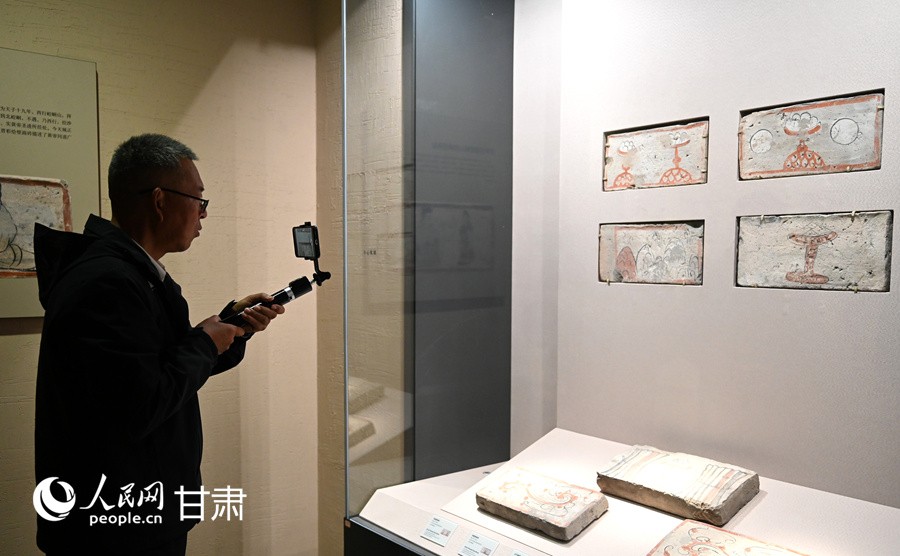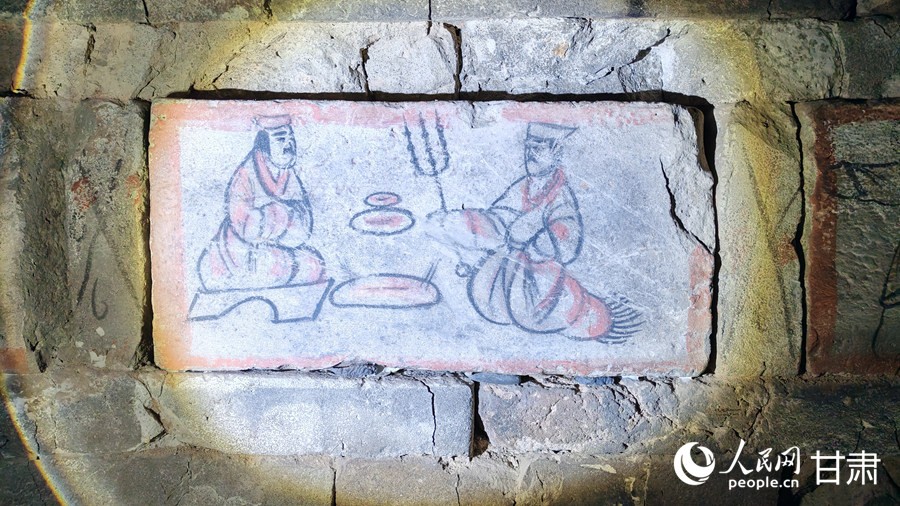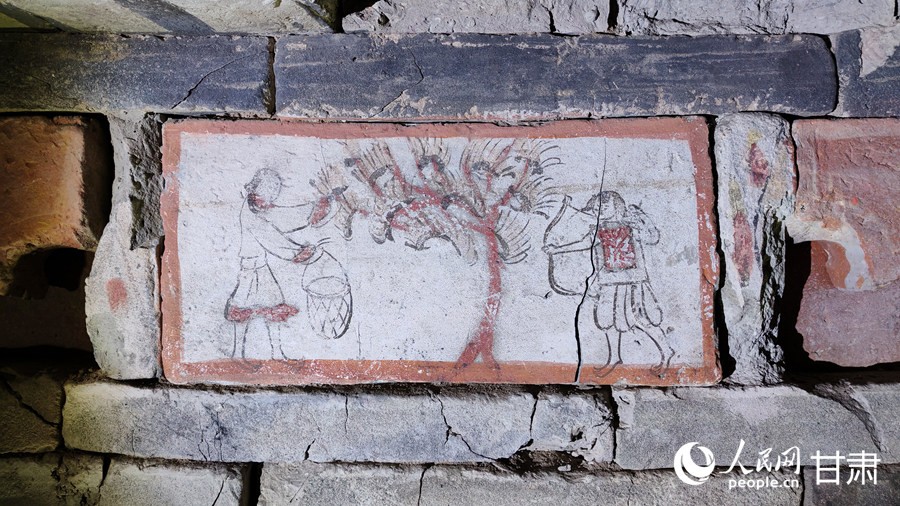




- BRNN
- BRI News
- BRNN News
- Database
Official Documents Polices and Regulations
Inter-government Documents International Cooperation BRI Countries
Business Guide Economic Data BRI Data
Trade
Investment Projects Latest projects
Cases - Content Pool
An online cultural campaign in China centered on murals recently brought participants to ancient tombs dating back to the Wei and Jin dynasties (220-420), where painted bricks offer a rare glimpse into everyday life from over 1,800 years ago.
The tombs with painted bricks, located in the cities of Zhangye and Jiayuguan, northwest China's Gansu Province, typically comprise a corridor, decorated walls, passageways and burial chambers.

A visitor captures painted bricks on a mobile phone at Gaotai Museum in Zhangye city, northwest China's Gansu Province. (People's Daily Online/Xi Juanjuan)
Pictures are painted directly on the bricks, with each brick portraying a distinct scene, earning these sites the nickname "underground galleries."
The paintings depict various aspects of life in the Wei and Jin dynasties, including farming, hunting, clothing, food and travel.
An exhibition of painted bricks from tombs of the Wei and Jin dynasties and the Sixteen Kingdoms period (304-439), held in Gaotai County Museum in Zhangye, showcases more than 200 painted bricks unearthed from tombs in the Ruins of the Camel City and the Ruins of Xusanwan Ancient City in Gaotai.
The painted bricks reflect the artistic traditions of pictorial stones from the Han Dynasty (202 B.C.-220 A.D.), while also introducing new techniques and styles that later influenced murals during the Sui and Tang dynasties (581–907), according to Sun Lijuan, deputy curator of the museum.
"Their distinctive style and lively forms offer invaluable insight into the politics, economy and aesthetics of the time," Sun said.

Photo shows a painted brick depicting two people enjoying a barbecue. The painted brick is one of the cultural relics preserved in the ancient tombs of the Wei and Jin dynasties (220-420) in Xincheng township, Jiayuguan city, northwest China's Gansu Province. (Courtesy of the campaign organizer)
More than 720 similar painted bricks, often arranged in continuous narrative panels, are preserved in a Wei-Jin tomb cluster in Xincheng township, Jiayuguan city.
Painted bricks in the tomb cluster, which spans 13 square kilometers and includes over 1,400 ancient tombs, resemble a 1,800-year-old "documentary of daily life."
The painted bricks cover themes similar to those found in Gaotai, complementing each other, said Lu Xiaoling, a staff member at the cultural relic management office in Jiayuguan city.
Notably, one painted brick from Tomb No. 5 shows a courier wearing a hat and a short garment with a right-overlapping closure, holding reins in his left hand and a document in his right, while the horse gallops with all four hooves in the air.

A painted brick depicting two people picking and protecting mulberry leaves, one of the cultural relics preserved in the ancient tombs of the Wei and Jin dynasties (220-420) in Xincheng township, Jiayuguan city, northwest China's Gansu Province. (Courtesy of the campaign organizer)
The absence of a mouth on the courier symbolizes his duty of discretion, a subtle reminder of the serious responsibilities of messengers in ancient China, according to Lu.
"This is by no means the painter's oversight, but rather a symbol of 'tight-lipped discretion,' hinting at the serious duty of a courier not to speak freely," Lu said. "Today, the image of this courier has become a symbol of China's postal sector, serving as a cultural emblem connecting ancient and modern communication and transportation."
Highlights of the painted bricks also include vivid depictions of scenes such as ancient people enjoying a barbecue, herding horses and picking mulberry leaves. The rich imagery reflects the prosperity of animal husbandry and the blending of diverse ethnic cultures during the Wei and Jin dynasties.

Tel:86-10-65363107, 86-10-65368220, 86-10-65363106